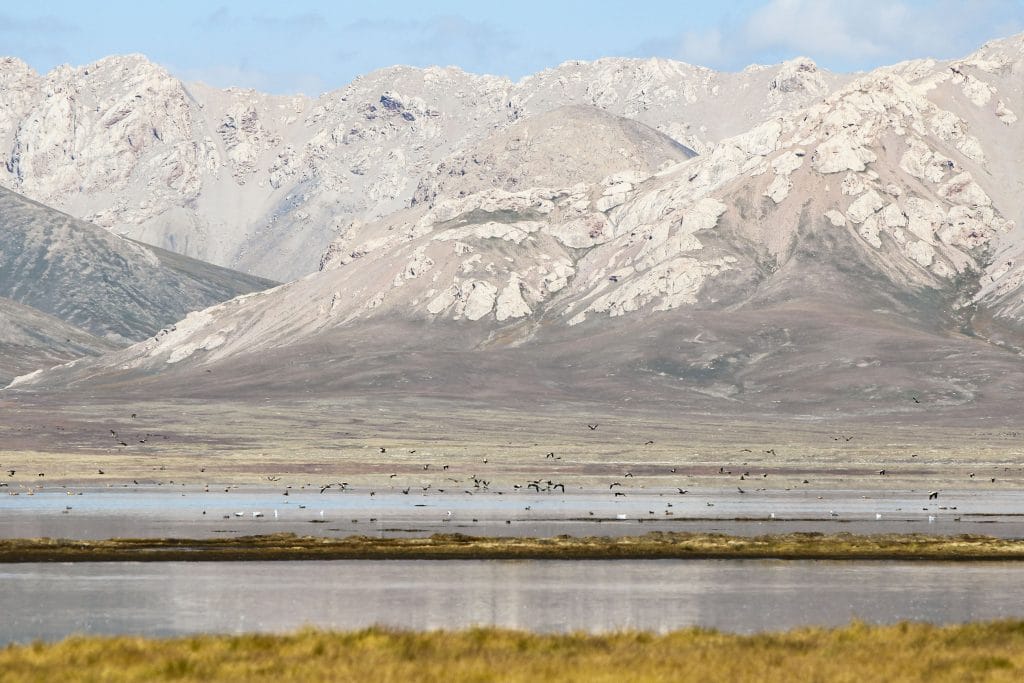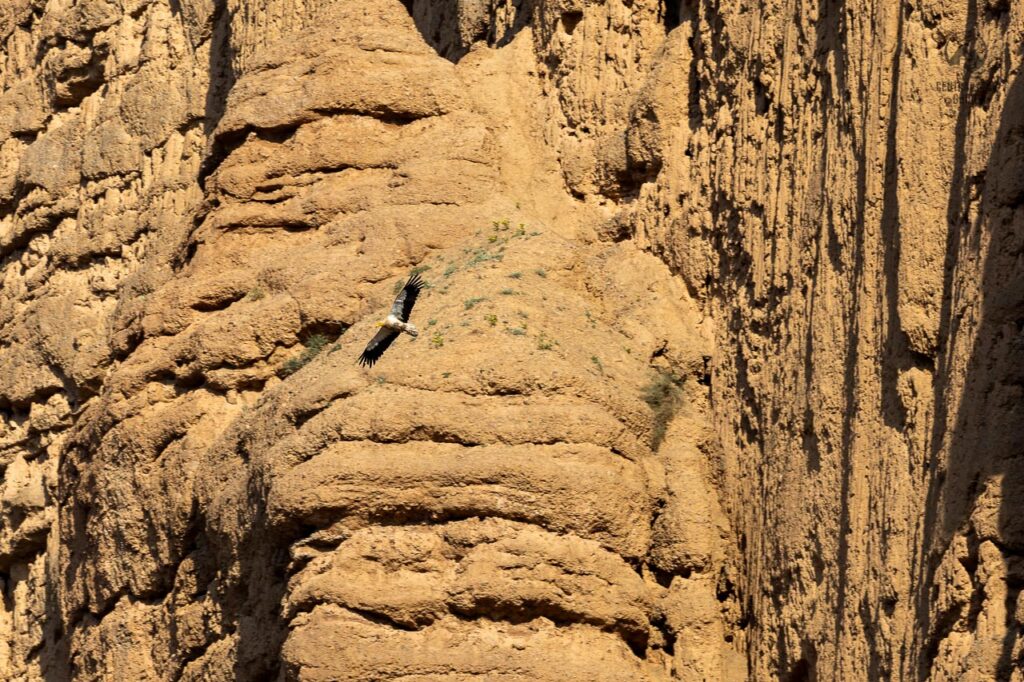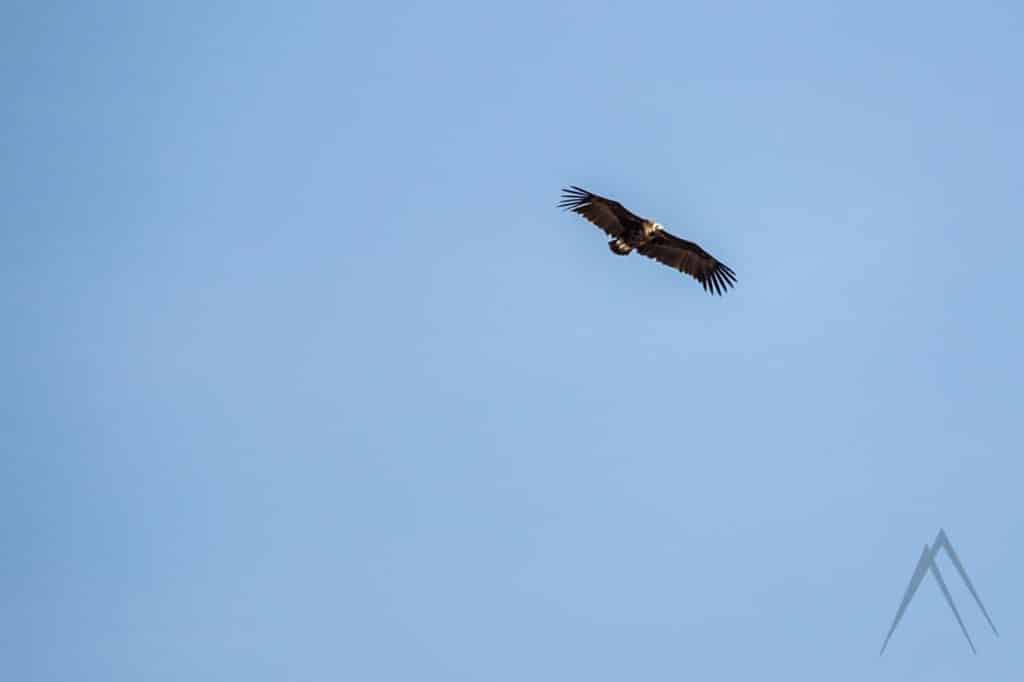Tien Shan Mountains
Tien Shan Mountains
The Tien Shan (or Tian Shan), translating to “Celestial Mountains” in Chinese, is a majestic mountain system in Central Asia, extending approximately 2 500 kilometers from west-southwest to east-northeast. It predominantly traverses the borders of China and Kyrgyzstan, slicing through the ancient land of Turkistan but also reaches Kazakhstan near Almaty, Tajikistan near Khujand and Panjakent and the lowest spurs disappear near Tashkent in Uzbekistan. The range is quite broad, reaching widths of up to 500 kilometers at certain points. This colossal structure is bordered by the Junggar Basin to the north and the Tarim Basin to the southeast, with the Hisor and Alay ranges of Tajikistan touching its southwestern fringes. The Tien Shan’s area spans an impressive 1 000 000 square kilometers. Within this expanse lies a cluster of peaks forming a central knot, from which ridges unfurl along the boundaries of China, Kyrgyzstan, and Kazakhstan. Near the Fergana Valley, Tien Shan are met met by the Pamir Alay and the Fann mountains of Tajikistan.
The highest peak, Jengish Chokusu, soars to 7439 meters, at an uninhabitable area between China and Kyrgyzstan, while Khan Tengri Peak, divided by Kyrgyzstan, China and Kazakhstan, reaches 7010 meters. Khan Tengri is a popular destination for mountaineers and most easily accessed from Kyrgyzstan. The Tien Shan’s topography is marked by a series of mountain ranges and valleys trending east to west, with the deepest valley being the Turpan Depression, plunging to 154 meters below sea level, the nadir of Central Asia. The best country to see different parts of the Tien Shan mountains is definitely Kyrgyzstan due to the variety of mountain conditions and the relatively easy access and the fairly comprehensive road network.


Tien Shan’s importance extends beyond its breathtaking geography; it is a vital source of fresh water for the region as it feeds the famous Amu Darya and Syr Darya rivers that both end in the Aral Sea and holds significant cultural and historical value. The name itself, derived from Chinese, reflects the reverence with which these mountains are regarded, symbolizing their heavenly stature in the eyes of those who have lived in their shadows and those who journey to witness their splendor.
Tian Shan Tours
Tien Shan Climate
The climate of the Tien Shan is predominantly continental, characterized by significant temperature extremes due to its inland position and considerable elevation. Summers can be warm, while winters are notoriously cold, with temperatures that can plummet far below freezing. The range’s high altitude also contributes to its overall aridity, with the surrounding plains and foothills experiencing a desert-like climate. However, variations do occur; for instance, the western Tien Shan receives more moisture from westerly winds, resulting in a slightly warmer and more humid climate compared to the eastern regions.
This climatic diversity affects the local ecosystems, with different flora and fauna adapted to the various microclimates within the mountainous terrain. The Tien Shan’s climate, with its unique combination of temperature and precipitation patterns, plays a crucial role in shaping the natural beauty and ecological diversity of this majestic mountain system.


Tien Shan flora and fauna
The Tien Shan mountains, a treasure trove of biodiversity, host a unique array of flora and fauna adapted to its varied climatic zones. The foothills and plains at the base of the mountains are characterized by semidesert and desert vegetation, where xerophytic grasses, wormwood, and species of the desert shrub genus Ephedra thrive. As one ascends, the landscape transitions to steppe, with elevations between about 3,500 and 11,000 feet supporting a tapestry of grasslands. Efforts have been made to restore these grasslands depleted by overgrazing, reflecting the ecological importance of this region.
Forests in Tien Shan are a mosaic of deciduous and coniferous trees, with forests mainly found on the northern slopes due to the harsh sun radiation and lack of water. Deciduous forests of maple and aspen, interspersed with wild fruit trees like apples and apricots, dominate the lower slopes. Remarkably, the southwestern slopes of the Fergana Kyrka Mountains are home to ancient nut-bearing forests, with stands of pistachio, walnut, and juniper growing up to 6,500 feet. Arslanbob in this area is the home of the largest naturally born walnut forest in the world. The higher altitudes see coniferous forests, predominantly composed of Asian spruce, with sparse juniper forests marking the upper boundary of the tree line.


The Tien Shan’s fauna is equally diverse. The semi-desert regions of the lower foothills are home to mammals such as red fox, corsac fox, wolf, steppe cat, weasels, ferrets, and various voles and shrews. The rich plant biodiversity, especially the wild fruit and walnut forests, are among the largest remaining in the world, providing a genetic resource for domestic fruit species. These forests also serve as a habitat for a variety of wildlife, including the elusive Snow Leopard, Wild Sheep, and Argali. The Western Tien-Shan, in particular, is recognized for its exceptional biodiversity and is a UNESCO World Heritage Site, highlighting its global importance as a center of origin for many cultivated fruit crops.
The Tian Shan montane conifer forests are dominated by the Asian spruce, which usually grows in stands of the same species. Mixed with the spruce at lower altitudes are aspen, while birch, willow, and mountain ash populate the higher altitudes. This diverse arboreal landscape provides a rich habitat for an array of fauna, ensuring the Tien Shan remains a vital ecological and conservation area.
Tien Shan birds
Bird enthusiasts can find species such as the Grey-crowned Goldfinch, a subspecies of the European Goldfinch that may one day be recognized as a separate species. The Azure Tit, reminiscent of a miniature, crestless Blue Jay, adds a splash of color to the mountainous terrain. Predatory birds like the Black Kite soar above, while the Red-billed Choughs and Common Ravens are common sights.
The melodic calls of the Common Cuckoo and the Grey Wagtail echo through the valleys, and the majestic Golden Eagle can be spotted against the backdrop of the snow-capped peaks and sometimes together with the local eagle hunters. The Greenish Warbler’s song is a treat for the ears, and the Brown Dipper, an aquatic passerine bird, can be seen along the streams and rivers.


High-altitude specialists such as the Goldcrest, Common Buzzard, and Common Kestrel are also present, thriving in the thin mountain air. The Western Tien-Shan, a UNESCO World Heritage Site, provides a sanctuary for these birds, ensuring their survival in a rapidly changing world. The Ibisbill, a bird so elusive and sought after by birdwatchers, can be found near high-elevation lakes and rivers, its distinctive curved bill a unique adaptation to its environment. The Turanga Forest, although declining, is a haven for the White-winged Woodpecker, Saxaul Sparrow, Shikra, and the extremely rare Yellow-eyed Pigeon.
Other notable species include the Guldenstadt’s Redstart, the largest of the redstarts, and the Atai and Brown Accentors. The Plain Mountain Finch and the Brandt’s Mountain Finch add to the diversity, while the Wallcreeper’s presence is a sign of a healthy ecosystem. The Bearded Vulture, also known as the Lammergeier, and the Alpine Chough are among the other high-altitude species that call the Tien Shan home. These birds, along with the Himalayan Rubythroat and the various species of vultures, including the Himalayan or Snow Vulture, contribute to the rich avian tapestry of the region.


More about Central Asia
Page updated 7.1.2025